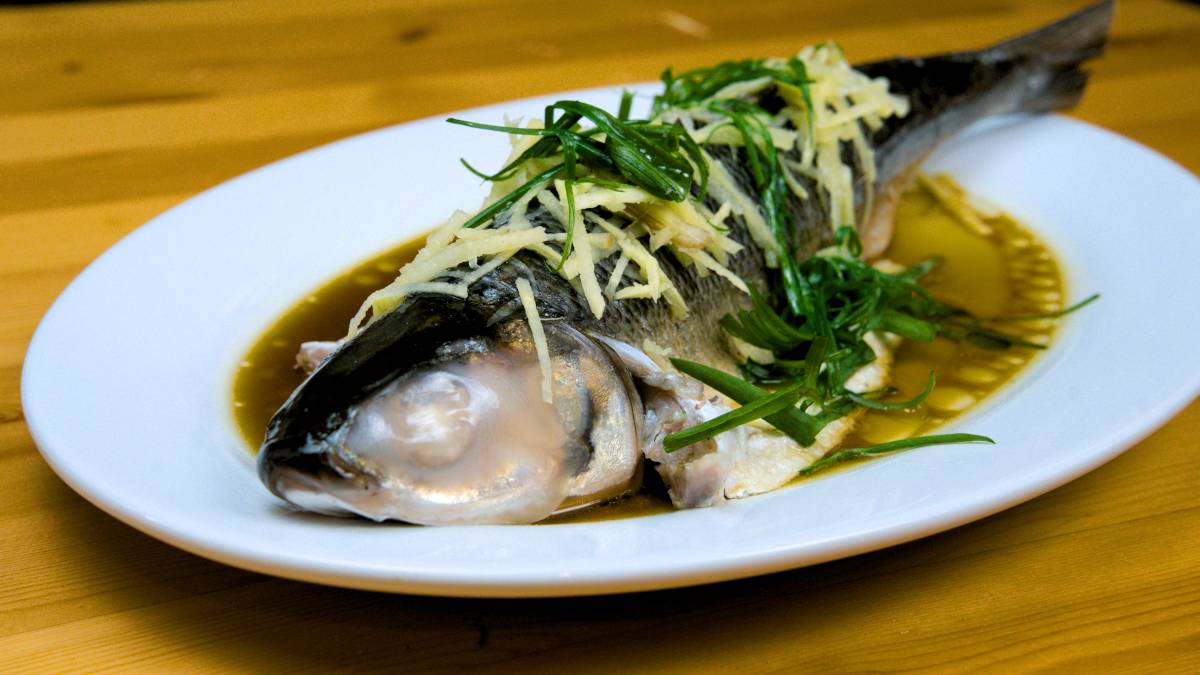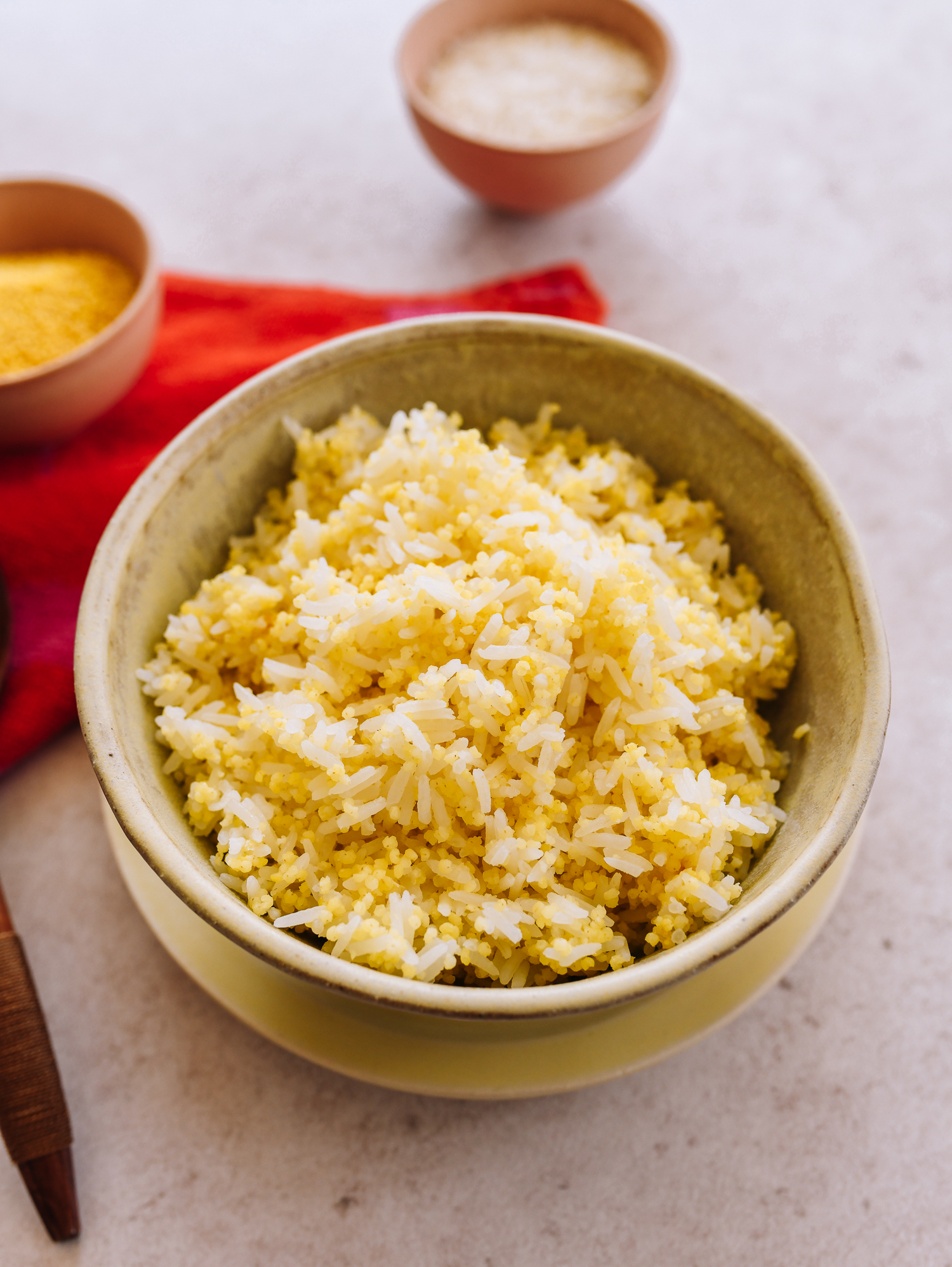Today, let’s explore the art of preparing the perfect Cantonese steamed fish.
Steamed fish is a beloved dish in Chinese cuisine, particularly among Cantonese families. Having grown up in a Cantonese household, I have experimented with various steaming techniques both at home and in restaurants. This method of preparation highlights the fish’s freshness, but achieving perfection requires following a few essential steps. Even in restaurants, fish can sometimes be overcooked, leading to less-than-ideal results. This article will guide you through the process of making steamed fish and provide a brief overview of the Cantonese-style sauce that accompanies it.
Let’s dive into the preparation of Cantonese steamed fish.

Note: This post may contain affiliate links. Please read my privacy policy for more info. I may receive commissions for purchases made through links in this post. As an Amazon Associate, I earn from qualifying purchases.
Ingredients Required to Steam the Fish
- Fish: Freshness is key when it comes to Cantonese steamed fish. In restaurants, you can often request the chef to select fish directly from a tank. While this isn’t possible at home, always ask your fishmonger for the freshest fish available. Common choices in Malaysia include marble goby, grouper, tilapia, and seabass. If fresh fish isn’t available, you may need to settle for frozen options, although they are not ideal. Fish fillets can be used for convenience, but this deviates from the traditional preparation.
- Sauce: You will need to prepare a Cantonese-style steamed fish sauce. For a detailed explanation, refer to the earlier article I posted. However, I will provide a simplified version of the sauce specifically for this recipe in the following section. If you’re short on time, bottled Chinese steamed fish soy sauce is a convenient alternative available at most Asian markets.
- Ginger and scallions: In addition to the sauce, you will need julienned young ginger and scallions (also known as green onions or spring onions). That’s all the ingredients required. Simple, isn’t it?
Prepare the Fish for Steaming
I always ask my fishmonger to gut and scale the fish, saving time and avoiding a messy cleanup at home.
Preparation Steps
- Once your fishmonger has cleaned the fish, wash it thoroughly at home to remove any debris and traces of blood from the cavity. This step is crucial, as any remnants can lead to an unpleasant fishy odor.
- You may choose to trim the fins and part of the tail, although many prefer to steam the fish with the head and fins intact for better presentation.
- If your fish isn’t the freshest, you can pour boiling water over it several times to help eliminate any fishy odor and tighten the skin, which prevents it from falling apart during steaming. I usually skip this step as I buy the freshest fish available.
- Place the fish on an oval-shaped stainless steel plate, which conducts heat well and is ideal for steaming. The oval shape accommodates most whole fish nicely.
- Before placing the fish on the plate, cut a few short sections of scallion and lay them lengthwise. I prefer using the white part of the scallion for better support. This creates a gap between the fish and the plate, allowing steam to circulate underneath for even cooking. Alternatively, you can use a metal spoon or chopsticks to achieve the same effect.
- Put the plate with the fish into a steamer, covering it with a lid. Steam the fish over high heat for 8 to 12 minutes. Timing is essential, and I will explain how to determine the exact steaming duration in the next section.
- Once steaming is complete, remove the fish from the steamer and discard the cloudy liquid that collects on the plate, as it has a strong fishy smell.
- Transfer the fish to a clean serving plate and pour the soy sauce mixture over it. Generously top the fish with julienned ginger and scallions.
- Heat a large tablespoon of peanut or corn oil until it’s hot, almost to the smoking point. Pour the hot oil over the ginger and scallions to slightly cook them and release their aromatic flavor.
Now, your perfect Cantonese-style steamed fish is ready to serve.
A Simple Steamed Fish Sauce to Make on the Fly
If you have time, I highly recommend preparing the steamed fish sauce (seasoned soy sauce) in advance. However, if you’re looking for a quick and easy option for this recipe, here’s a simplified version:
- Cut two stalks of scallion into two-inch sections and thinly slice a thumb-sized piece of ginger. Sauté them in a tablespoon of oil until fragrant.
- Add two tablespoons of good-quality light soy sauce, a tablespoon of Shaoxing wine, and 1/4 cup of water. Let the mixture simmer for 5 to 10 minutes until it reduces by half. Strain to remove all solids.
- Finally, add a splash of sesame oil and a pinch of ground white pepper. Your quick and easy Cantonese-style steamed fish sauce is ready. Enjoy this classic dish!
How to Ensure That the Steamed Fish is Properly Cooked
One of the main challenges in preparing steamed fish is ensuring it is cooked just right, without being overcooked. This is a common pitfall, even in restaurants. The cooking time depends on the size of the fish and the heat of the steamer. Here are some guidelines to help you achieve perfect results:
- Steam the fish over high heat, ensuring the water is boiling rapidly before placing the fish in the steamer.
- Generally, steam a small fish (around 500g or one pound) for about 8 minutes, and a larger fish (over 1kg or 2 pounds) for up to 12 minutes.
- To check if the fish is cooked, insert a chopstick into the thickest part. The flesh should separate easily, and the color should be opaque, not translucent.
- Check the fish’s eye; when fully cooked, it should turn completely white and bulge slightly.
- If unsure, use a kitchen thermometer to check the internal temperature, which should reach 145°F (63°C).
The Cookware and Crockery Required for Chinese Steamed Fish
- In Chinese restaurants, chefs typically use large commercial steamers. At home, a large stainless steel wok with a lid is the most practical cookware for steaming fish, as whole fish can be too large for smaller steamers.
- Use a stainless steel oval-shaped dish for best results. If using a ceramic or heat-proof plate, remember that they don’t conduct heat as well, so you may need to add an extra minute to the steaming time.
- A steaming rack is necessary to elevate the dish above the boiling water. If you don’t have one, you can use two parallel chopsticks inside the wok to support the plate.
- Using a plate lifter to remove the hot plate from the steamer makes the process much easier. Consider investing in one if you frequently steam food at home.





